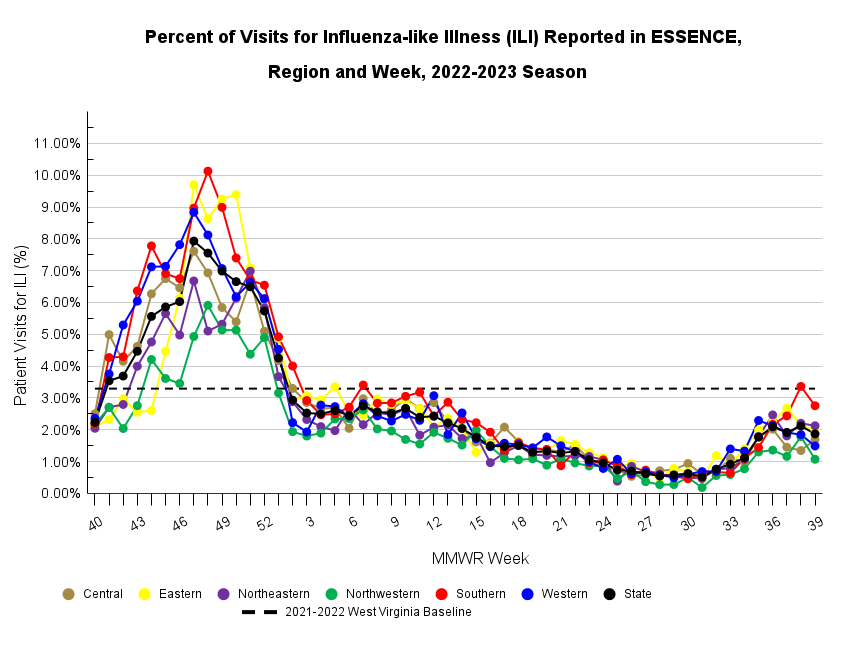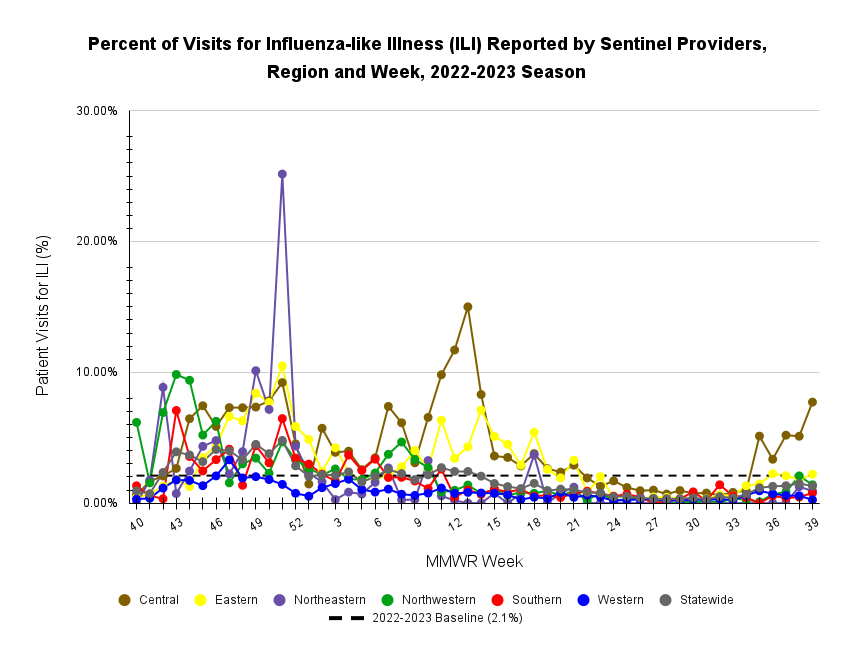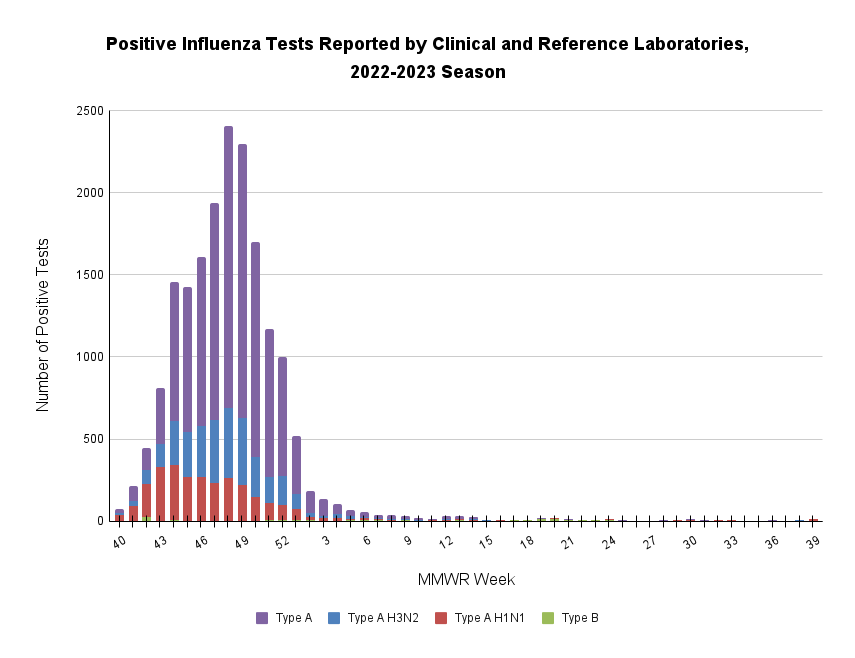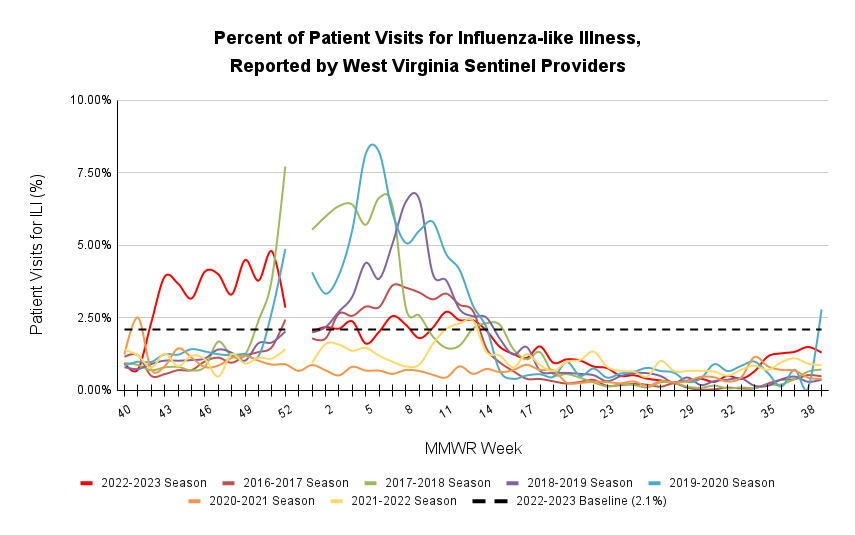
Syndromic Influenza-like Illness Surveillance
Most hospital emergency departments in the state report ILI in ESSENCE, which pulls data by ICD-10 code and chief complaints. Like the sentinel provider data (see Sentinel Provider graph), this data can show the duration and severity of the current influenza season.

Sentinel Provider Influenza-like Illness Surveillance
The figure above demonstrates the percent of visits for influenza-like illness (ILI) reported by West Virginia sentinel providers during this influenza season. Sentinel providers are volunteer healthcare providers who report cases of ILI as a proportion of total patients seen. If the resulting percentage of visits due to ILI is higher than than the state baseline (in graph above), then high rates of influenza transmission are likely. Reports of ILI should always be viewed within the context of laboratory data and other indicators of influenza activity.

Hospital and Reference Influenza Surveillance
The figure above displays the number of positive tests for influenza by type (A or B) and subtype as available, as reported by hospital and reference laboratories that test by any of the following methods: polymerase chain reaction (PCR), immunofluorescence (IFA or DFA), or culture. Rapid test results are not included in the totals because of the low positive predictive value during times of low influenza activity. This figure is useful for assessing changes in influenza activity and type of circulating viruses. This information, together with information on influenza A subtype can be useful in guiding empiric therapy for influenza-like illness. This figure is also useful for pinpointing the first identification of influenza in the state of West Virginia. During a typical influenza season, positive identifications by laboratories usually precede the seasonal increase in influenza-like illness by many weeks. The Y-axis gives the total specimens isolated by these laboratories.

State Public Health Laboratory Influenza Surveillance
The Office of Laboratory Services accepts influenza surveillance specimens from the following sources: respiratory outbreaks; up to five influenza A isolates per week from hospitals; and up to five specimens per week from sentinel providers. The Office of Laboratory Services can type and subtype influenza isolates; thus this data is useful for identifying which influenza strains are currently circulating in West Virginia. This data can also be used by physicians to guide empiric antiviral therapy. NOTE: Type AH1(09) refers to the H1N1 subtype that emerged in the 2009 pandemic and that has been in seasonal circulation ever since.

Influenza Activity
Every week, West Virginia reports the level of Influenza Activity to the Centers for Disease Control and Prevention using this national definition:
- No Activity
- No laboratory-confirmed cases of influenza and no reported increase in the number of cases of ILI.
- Sporadic
- Small numbers of laboratory-confirmed influenza cases or a single laboratory-confirmed influenza outbreak has been reported, but there is no increase in cases of ILI.
- Local
- Outbreaks of influenza or increases in ILI cases and recent laboratory-confirmed influenza in a single region of the state.
- Regional
- Outbreaks of influenza or increases in ILI and recent laboratory confirmed influenza in at least two but less than half the regions of the state with recent laboratory evidence of influenza in those regions.
- Widespread
- Outbreaks of influenza or increases in ILI cases and recent laboratory-confirmed influenza in at least half the regions of the state with recent laboratory evidence of influenza in the state.